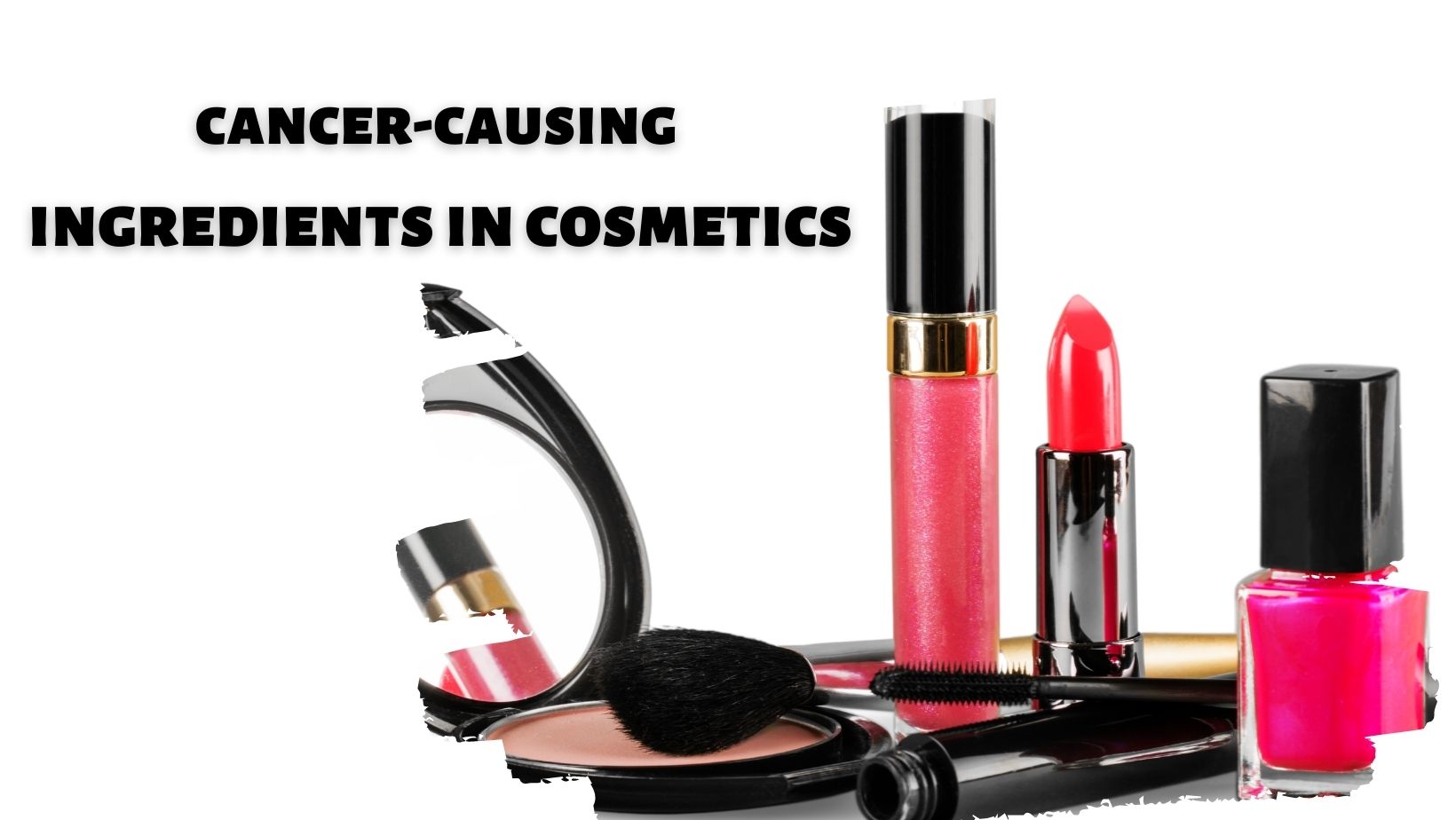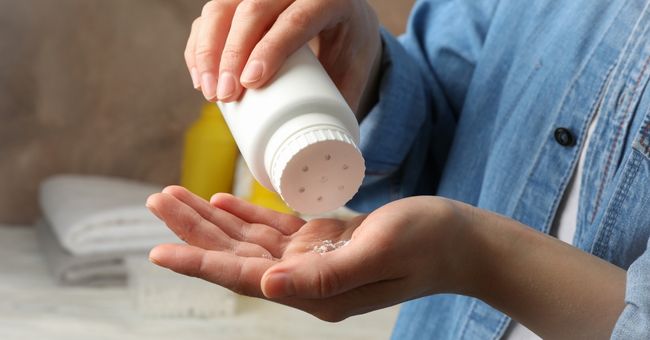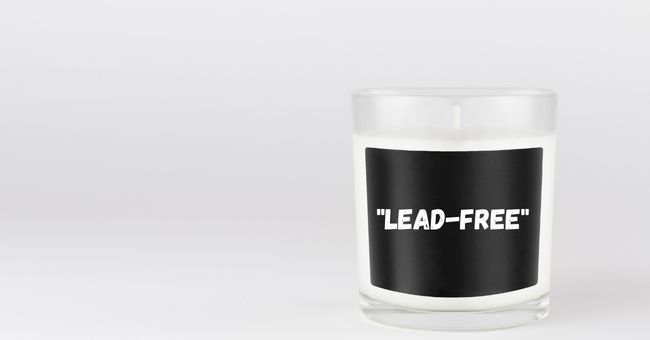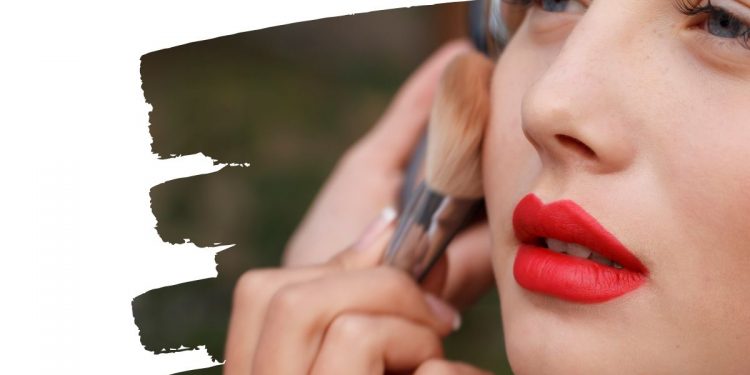Several carcinogens in makeup and in cosmetics have been linked to an increased risk of cancer in some studies. Also, it’s important to note that not all products containing these ingredients are necessarily harmful, and the evidence linking them to cancer is not always clear-cut.
However, Products should be labeled “paraben-free” or “talc-free to avoid potential harm caused by cosmetics. It’s also a good idea to consult with a healthcare professional if you have any concerns about your risk of cancer.
Few Carcinogens in makeup
Several ingredients have been identified as potential cancer-causing agents in cosmetics. Here are a few examples.

1. Parabens
Parabens are a group of synthetic preservatives that are widely used in cosmetics and personal care products to prevent the growth of bacteria, mold, and yeast. They are relatively inexpensive and effective at extending the shelf life of products.

A wide range of cosmetics are added in parabens, including;
- Shampoos
- Conditioners
- Lotions
- Creams
- Deodorants
- Makeup products.
- They are used in some food products and pharmaceuticals.
Some concerns about the safety of parabens
There has been some concern about the safety of parabens, as studies have shown that they can mimic the activity of the hormone estrogen in the body.
This has led to speculation that they may contribute to the development of breast cancer, although this has not been definitively proven.
The Cosmetic Ingredient Review (CIR), an independent panel of scientific experts, has concluded that parabens are safe for use in cosmetics at levels up to 0.4%, although some consumer advocacy groups disagree with this assessment.
- In response to consumer concerns, many cosmetic companies have begun using alternative preservatives.
- such as phenoxyethanol, potassium sorbate, and sodium benzoate.
- To address concerns about the use of parabens in cosmetics, you can search for products labeled “paraben-free.”
2. Formaldehyde
Formaldehyde, which is a known carcinogen, can be absorbed through the skin or inhaled during use, thereby increasing the risk of cancer.

Manufacturers add formaldehyde to cosmetics.
It works by preventing the growth of bacteria, mold, and yeast. However, formaldehyde can also be a skin irritant and sensitizer, meaning that it can cause allergic reactions in some people.
In addition, formaldehyde has been classified as a known human carcinogen by the International Agency for Research on Cancer (IARC), and exposure to high levels of formaldehyde can cause cancer.
Uses of formaldehyde in cosmetics.
The Food and Drug Administration (FDA) regulates the use of formaldehyde in cosmetics in the US, allowing its use as a preservative at low levels (up to 0.2%).
However, due to consumer concerns and regulatory pressure, many cosmetic companies have started to phase out the use of formaldehyde in their products.
If you are concerned about the use of formaldehyde in your cosmetics, you can search for products labeled “formaldehyde-free“ or those that use alternative preservatives.
It’s also a good idea to patch-test new products before using them, particularly if you have sensitive skin or a history of allergic reactions.
3. Talc
“Cosmetics and personal care products often contain talc, a mineral that absorbs moisture and enhances the texture of items such as baby powder, body powder, and various makeup products, including eyeshadow, blush, and foundation.”

Cosmetic products contain talc.
There has been some concern about the safety of talc in cosmetics, particularly about its potential to cause cancer.
The International Agency for Research on Cancer (IARC) has classified talc containing asbestos as a known human carcinogen, but the law requires talc used in cosmetics to be asbestos-free.
In response to consumer concerns, many cosmetic companies have started to use alternative ingredients to talc, such as cornstarch, rice starch, or tapioca starch. Look for “talc-free” or “alternative ingredients” products to reduce talc use.
4. Coal tar dyes
Some coal tar dyes used in cosmetics and personal care products have been linked to cancer, and certain countries have banned or restricted their use.

For example, the European Union has banned the use of several coal tar dyes in cosmetics, including D&C Red No. 28, D&C Red No. 36, and D&C Yellow No. 11.
The Food and Drug Administration (FDA) regulates the use of coal tar dyes in cosmetics in the US, requiring that they are safe for use at intended levels. Consumer advocacy groups are advocating for stricter regulations on coal tar dyes to protect consumers.
Concerned about the use of coal tar dyes.
- Cosmetics and personal care products use synthetic dyes known as coal tar dyes.
- It is important to note that not all synthetic dyes are harmful, and some are safe for use in cosmetics.
- However, if you have sensitive skin or allergies, patch-test new products before using them.
5. Lead
Naturally occurring in the earth’s crust, lead can contaminate cosmetics and personal care products as heavy metals. Furthermore, Colorant is a byproduct of other cosmetic ingredients, such as clay-based materials.
Some concerns about the Lead.
Exposure to lead can be particularly harmful, especially for vulnerable populations such as pregnant women and young children. Also, Lead exposure can have serious health consequences, including developmental delays, learning difficulties, and behavioral problems. In short, It is important to take steps to minimize exposure to lead to protect these at-risk groups.
As, it can cause developmental delays, behavioral problems, and other health issues. Lead can accumulate in the body over time, and even low levels of exposure can be harmful.
The Food and Drug Administration (FDA) regulates the use of lead in cosmetics in the US. Which limits the amount of lead that can be present in cosmetics to 10 parts per million (ppm). Additionally, some studies have found lead in cosmetics at levels higher than this limit.
Avoid exposure to lead in cosmetics,
To avoid exposure to lead in cosmetics, one can look for products labeled as “lead-free” or “low-lead. While it may be difficult to completely avoid exposure to heavy metals like lead, taking certain precautions can significantly reduce the risks.
For instance, one should be vigilant in avoiding cosmetics that contain lead or other harmful substances. By doing so, you can detect any potential health issues early on and take appropriate action to minimize their impact.

Conclusion
To Sum up, It’s important to note that not all cosmetics contain these ingredients. Also, government agencies in many countries use these ingredients.
Therefore, it is important to always choose goods that are devoid of substances that could be dangerous. This way, you can ensure that your health and well-being are not compromised. Additionally, selecting products that are free from harmful chemicals is crucial for environmental sustainability.
Moreover, opting for safer alternatives can also promote ethical and responsible consumerism, which can have a positive impact on society as a whole.















































